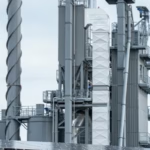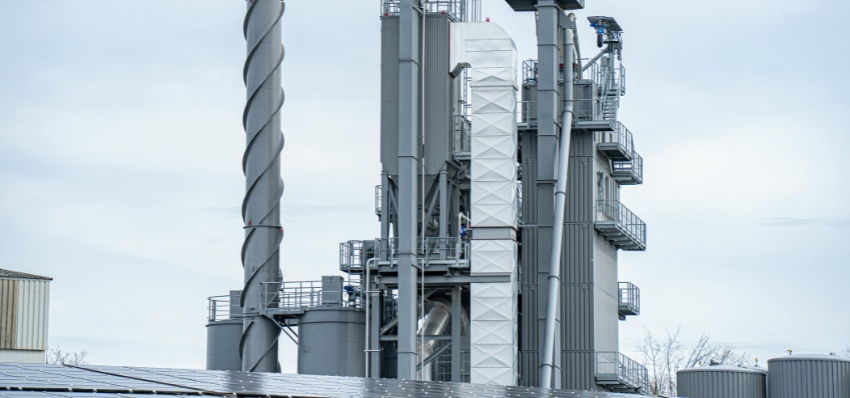
Extending Structural Lifespan: The Game-Changing Power of Thermal Spray Zinc Coating
- Admin
- August 6, 2025
- Uncategorized
- 0 Comments
Bridges and steel structures are impressive feats of engineering. However, they are vulnerable to corrosion from factors like weather, salt, industrial emissions and moisture, which can lead to rust and structural failure if unprotected. To address this, engineers use thermal spray zinc coating, a method that applies molten zinc to steel surfaces, creating a protective barrier. This zinc not only shields the steel but also acts sacrificially, corroding before the steel does. As a result, this coating extends the lifespan of structures, lowers maintenance costs, enhances safety, and promotes sustainability by minimizing the need for major replacements.
What Is Zinc Thermal Spray Coating?
Zinc thermal spray coating, or zinc metallizing, is a protective process where molten zinc is sprayed onto a steel surface to guard against corrosion. The steel is first cleaned and roughened through abrasive blasting, ensuring the zinc bonds securely. Zinc wire or powder is melted using a high-temperature flame or electric arc and then atomized into fine particles that are sprayed onto the steel using compressed air. As these zinc particles cool and solidify, they form a tightly bonded, porous coating that offers two levels of protection. First, it acts as a physical barrier, blocking moisture, oxygen, and contaminants from reaching the steel. Second, it provides cathodic (or sacrificial) protection—zinc corrodes in place of the steel if the coating is breached. This dual action ensures long-term durability, even in harsh environments, and makes the method ideal for protecting bridges, towers, pipelines, and other exposed steel structures.
Why Bridges and Steel Structures Need Protection
- Corrosion Risk
Steel is highly susceptible to corrosion when exposed to moisture, oxygen, and airborne pollutants like sulfur dioxide or chloride salts. Over time, these elements trigger rust formation, which gradually eats away at the steel, reducing its strength, stability, and structural integrity, especially in marine or industrial environments. - Constant Exposure
Unlike indoor or sheltered structures, bridges and exposed steel installations face relentless environmental stressors. Rain, snow, UV rays, temperature fluctuations, and freeze-thaw cycles continually affect the steel. Without a protective barrier, these natural elements accelerate deterioration, increasing the likelihood of visible damage, cracking, and eventual material fatigue. - Long Lifespan Demands
Infrastructure such as bridges is designed with service lives of 50 to 100 years. Achieving such durability requires preventative protection from the outset. Without it, frequent maintenance or premature replacements become necessary, undermining the goal of creating long-lasting, sustainable public infrastructure and straining both budgets and resources. - High Maintenance Costs
Repairing corroded steel is not only labor-intensive but also expensive. In bridges, it often involves lane closures, traffic rerouting, or even partial shutdowns. This leads to economic loss, public inconvenience, and a high operational cost, which could be minimized with early and effective protective treatments like zinc coating. - Safety and Longevity
Unchecked corrosion significantly compromises the load-bearing capacity of steel structures, posing serious safety risks. Even small areas of rust can lead to larger failures over time. Applying protective coatings ensures structural reliability, reduces inspection and repair frequency, and ultimately supports long-term safety and performance goals.
Thermal Spraying Process
Thermal spray zinc coating is a powerful and reliable solution for extending the lifespan of bridges and steel structures exposed to harsh environmental conditions. By providing both barrier and sacrificial (cathodic) protection, it prevents corrosion, enhances structural integrity, and minimizes long-term maintenance costs. The process is highly adaptable, allowing for on-site application on large or fixed structures, and it ensures consistent coverage and durability. This makes it especially valuable for infrastructure in coastal, industrial, or high-moisture environments. While the initial application cost may be higher than traditional paint systems, the long-term benefits—such as reduced repair frequency, extended service life, and improved safety—far outweigh the investment. Additionally, its environmentally friendly nature supports sustainable construction practices. For engineers, asset managers, and public infrastructure planners, thermal spray zinc coating offers a proven method to protect critical structures, reduce life-cycle costs, and ensure reliability for decades to come. It’s a smart, forward-thinking approach to preserving steel in the modern world.
FAQs:
- How does thermal spray zinc coating perform compared to epoxy coatings?
While both coatings offer corrosion protection, thermal spray zinc offers superior long-term durability due to its cathodic protection properties. Epoxy coatings primarily act as barriers and can fail if cracked or scratched, whereas zinc continues to protect the steel even if the surface is damaged. - Can thermal spray zinc coating be used on irregular or complex shapes?
Yes, the spray application allows it to evenly coat complex geometries, including angles, edges, bolts, and welds, which are often difficult to protect using dip or brush methods. This makes it highly suitable for intricate bridge components and structural connections. - Is thermal spray zinc coating resistant to high temperatures?
Thermal spray zinc performs well in a wide temperature range but may lose some protective qualities above 500°F (260°C). In high-heat environments, additional topcoats or alternative metals like aluminum may be used in combination. - How is the thickness of thermal spray zinc coating monitored or measured?
Coating thickness is typically measured using magnetic or ultrasonic gauges. Specifications usually require adherence to standards like ISO 2063 or SSPC-CS 23.00/AWS C2.23/NACE No. 12, ensuring consistent and reliable application. - Can thermal spray zinc be combined with other protective systems?
Absolutely. It’s often part of a duplex system, where zinc is first sprayed for corrosion protection, and then a topcoat of paint or sealer is added. This combination offers enhanced aesthetics and increases the coating’s service life by up to 1.5–2 times compared to either system used alone.


